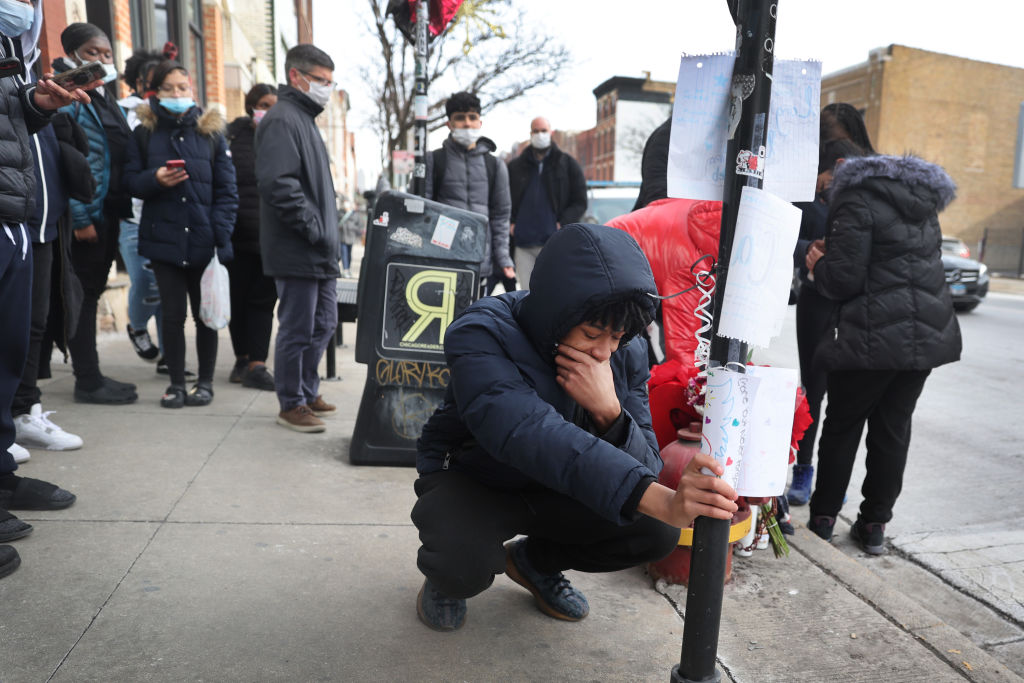
Before the COVID-19 pandemic began, the Black population in the United States was already more at risk than the white of being exposed to gun violence. Now, a recent study out of Boston University has revealed a disturbing trend in how that trend evolved during the last few years.
The study, which was published in the American Journal of Preventive Medicine on March 14, shows that in the five years before the pandemic began, Black children, compared to white children, were already at a significantly higher level of risk of being exposed to firearm violence. During the pandemic, that disparity grew even wider, as gun violence across the country increased.
The study measures neighborhood exposure and not the number of people actually injured or killed, but recent news has sadly underlined the risks inherent even in having firearm violence take place nearby. On Thursday night in Brooklyn, N.Y., a 12-year-old boy sitting with his family inside a car was killed by crossfire, becoming the latest young victim in a string of several headline-making incidental shootings of children in recent months.
Using U.S. Census data and gun violence stats from the Gun Violence Archive, a nonprofit that collects information on shooting incidents across the country, the authors found that around nine million children ages 5-17 (out of around 49 million overall in the country) lived in a neighborhood that experienced at least one fatal shooting each year from 2015 to 2019. Among those nine million, the exposure risk for Black kids was 4.4 times higher than for white kids. For Hispanic kids, it was 2.1 times higher.
Column: There’s a Proven Way to Reduce Gun Violence in America’s Cities. We Just Need to Fund It
During the first year of the pandemic, the nine million increased to 11 million and the majority of that increase was experienced in Black and brown communities.
“Not only were the disparities reproduced during the pandemic, they actually got more severe,” Jonathan Jay, a professor at Boston University and co-author of the study, tells TIME. “We knew during the pandemic that gun violence was increasing across the U.S., so to see the disparity increase didn’t surprise us. The pandemic was just reproducing social disadvantages across multiple dimensions of marginalization, including race.”
What did stand out to Jay were some of the geographical differences they found. According to the study, the South saw the highest overall rates of gun violence exposure among children—but the racial disparities were most apparent in the Northwest and the Midwest.
“To us, that speaks to the extent to which residential segregation matters, because the Northeast and the Midwest are the most segregated,” Jay says. Some of the most segregated cities in the U.S. include Detroit; Chicago; Newark, N.J.; and Cleveland. ” Those regions have higher levels of safety but they don’t distribute safety equally.”
The impact of so much exposure to gun violence on children is multifaceted: their mental and physical health is affected, and they tend to do worse in school. Neighborhood gun violence rates also affect how residents are able to access community resources.
Read more: A Gun Violence Victim Shares His Story
Though the study set out only to measure the problem, its authors found that their results highlight the need to find solutions.
“Racially disparate exposure to firearm violence requires structural solutions focused on preventing violence,” the study says, arguing that actions such as violence intervention and financial investment in disenfranchised communities are tangible solutions.
“This really points to all the different levels that we need to be addressing,” Jay says. “We need to turn off the tap of new experiences that are just compounding the adverse experiences that kids have already had with gun violence.”
More Must-Reads From TIME
- The 100 Most Influential People of 2024
- Coco Gauff Is Playing for Herself Now
- Scenes From Pro-Palestinian Encampments Across U.S. Universities
- 6 Compliments That Land Every Time
- If You're Dating Right Now , You're Brave: Column
- The AI That Could Heal a Divided Internet
- Fallout Is a Brilliant Model for the Future of Video Game Adaptations
- Want Weekly Recs on What to Watch, Read, and More? Sign Up for Worth Your Time
Write to Josiah Bates at josiah.bates@time.com